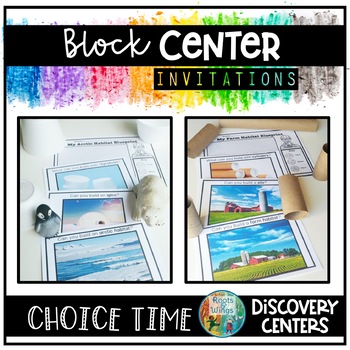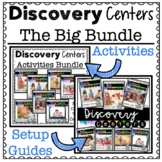Kindergarten Block Center Challenges, Block Building Play Ideas and Activities
- PDF
What educators are saying
Also included in
- These block center building activities are my favorite ways to offer block play in my kindergarten classroom, but can also be used in preschool, first grade or homeschool. Use these block building center activities as an independent activity, station, play tub, or for morning work, choice time or smPrice $8.00Original Price $10.00Save $2.00
- These center activities are my favorite ways to playfully practice both academic and social skills in my kindergarten classroom, but can also be used in preschool, first grade or homeschool. Use each center as an independent activity in a center, bin, or tub or for morning work, choice time or freePrice $50.00Original Price $87.00Save $37.00
- If you are looking to setup developmental centers, such as blocks, story, math, writing, STEM, science, or art, in your preschool, kindergarten, or first grade classroom, this resource has everything you need to get started. It includes a set of 7 setup guides (one for each center) that will walk yoPrice $49.60Original Price $122.00Save $72.40
Description
These block center challenges are my favorite way to offer block building activities in my kindergarten classroom, but can also be used in preschool, first grade or homeschool. Use these block play ideas as an independent activity, station, play tub, or for morning work, choice time or small group lessons. Just add blocks and a few simple props and you are ready to go!
When children visit the block building center, they explore both math and science concepts through exploration and experimentation. This bundle includes 3 different types of challenges to offer at your block center throughout the school year.
Read 5 Must-Have Materials for Your Kindergarten Block Center to learn more about setting up a block center in your classroom.
✅How Do These Block Building Challenges Work?
This resource gives you a year's worth of building challenges intended to spark children’s interests and imaginations, encourage “outside the block” thinking, and provide opportunities for children to make their thinking visible.
You'll find 36 challenges, 12 within each category, making it easy for you to offer weekly or monthly challenges in your classroom block center.
The block building challenges include:
- Material Challenges: Children are invited to explore and build with a new material such as rocks or planks.
- Structural Challenges: Children are invited to build a specific structure such as a skyscraper or a bridge.
- Habitat Challenges: Children are invited to research and build a habitat such as a farm or jungle.
You might choose just to offer a new material, structural or habitat challenge each month or combine them and offer one of each within the same month. If you choose the latter option, you’ll see that the material, structure, and habitat were carefully selected to work together to create a complete challenge set.
✅What's Inside These Block Play Challenges?:
- a full-color table tent to display each challenge in your block center
- printable "blueprints" for kids to draw their block building ideas
- full-color photos of each habitat
- Colorful signs/labels to hang in your block center
- Family "wish list" letter to help you collect the materials needed for each block center challenge
✅How Can I Use These Block Building Activities?:
There are many ways to use these block center challenges. You might try:
- Block Center
- Building Tubs
- Construction Zone
- Morning Bins
- Choice Time
- Free Play
- Early Finisher Task
✅Which Skills Will Kids Practice?
- mathematical thinking
- creativity
- collaboration
- abstract reasoning
- visual-spatial awareness
- fine motor skills
- gross motor skills
✅More Kindergarten Center Activities:
- Math Center Invitations
- Makerspace Invitations
- Science Center Invitations
- Block Center Invitations
- Storytelling Invitations
- Writing Center Invitations
- Art Center Invitations
⭐Need help setting up a block center in your classroom? Check out this Block Center Classroom Setup Guidefor tons of ideas to get you started.
✅What Teachers Say About These Block Building Challenges:
❤️"This resource has provided an easy, attractive way to update the bulletin board in our Block Center as our themes/units of study change. The photos are visually attractive and engage the students. They have loved working on the challenge activities." Carolyn M.
❤️"I love the way everything lined up with so many standards." Kathleen H.
I so appreciate your feedback and take time to read every comment! Click on the star under my store name to find out about new products, sales, freebies!
NEW PRODUCTS ARE NOW LISTED AT 50% OFF FOR THE FIRST 48 HOURS. FOLLOW AND SAVE!








